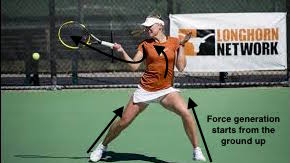Shoulder pain is perhaps the most common complaint from clients who engage in overhead activities like tennis, volleyball, baseball, or swimming. Whether you’re an amateur, professional, or just a weekend warrior, shoulder pain leads to altered movement patterns. In the presence of pain, we develop compensatory movement patterns, and vice versa: altered movement patterns over time can result in pain and injury. When the normal movement patterns are altered, certain muscles are doing too much or “working overtime,” while other muscles are inhibited. This often results in repetitive microtrauma, laxity and undue stress placed on the surrounding structures, including the rotator cuff tendons, labrum, and glenohumeral ligaments. The shoulder complex is made up of articulations between three bones: shoulder blade, collar bone and humerus. It is important to note that, by anatomical design, the ball-and-socket shoulder (glenohumeral) joint is the most mobile joint, allowing many multi-directional movements.
In order to produce efficient movements and generate power during overhead motions, the whole kinetic chain must work together. I will use the tennis serve as an example. In the Sports Physical Therapy journal article by Kovacs and Ellenbecker, the authors point out that a tennis serve is “a complex stroke characterized by a series of segmental rotations involving the entire kinetic chain”. In order to produce an optimal serve, there needs to be a synchronous lower body-core force production that is transferred through the upper body, racket and into the ball. If there are weak links in the lower body or core, the shoulder might become a source of pain because the body tries to compensate for the weakness by overusing the shoulder.
The NEURAC method, which stands for NEURomuscular ACtivation, focuses on a pain-free restoration of movement to improve symmetry and function and is supported by more than 20 years of research and evidence. This approach allows practitioners to identify weak links and neuromuscular asymmetries in the whole kinetic chain, which then are addressed on an individual basis to figure out the root of the problem which may be leading to client’s symptoms. In a well functioning kinetic chain, the lower body and core are crucial in generating power and stable base for upper body mobility. According to biomechanical analysis of the shoulder during tennis activities, the link between legs and trunk develops 51- 55% of kinetic energy delivered to the hand. The NEURAC approach uses the Redcord slings and bungees to offload needed body parts to eliminate compensatory patterns, which are closely supervised by a physical therapist during one-on-one patient care here at CHARM. Exercises can be progressed and regressed by increasing or decreasing the load and neuromuscular challenge anytime depending on an individual client.
From my personal experience as a competitive tennis player, I found the NEURAC approach to be highly effective in resolving my shoulder pain because it addressed the whole kinetic chain. It led to increased activation of the stabilizing muscles of my core, shoulder blades and lower body. This activation translated to more powerful and pain free strokes on the tennis court. Whether you have pain while doing sports you love or you just feel that your body is not moving efficiently, take care of it now and your body will thank you later.




